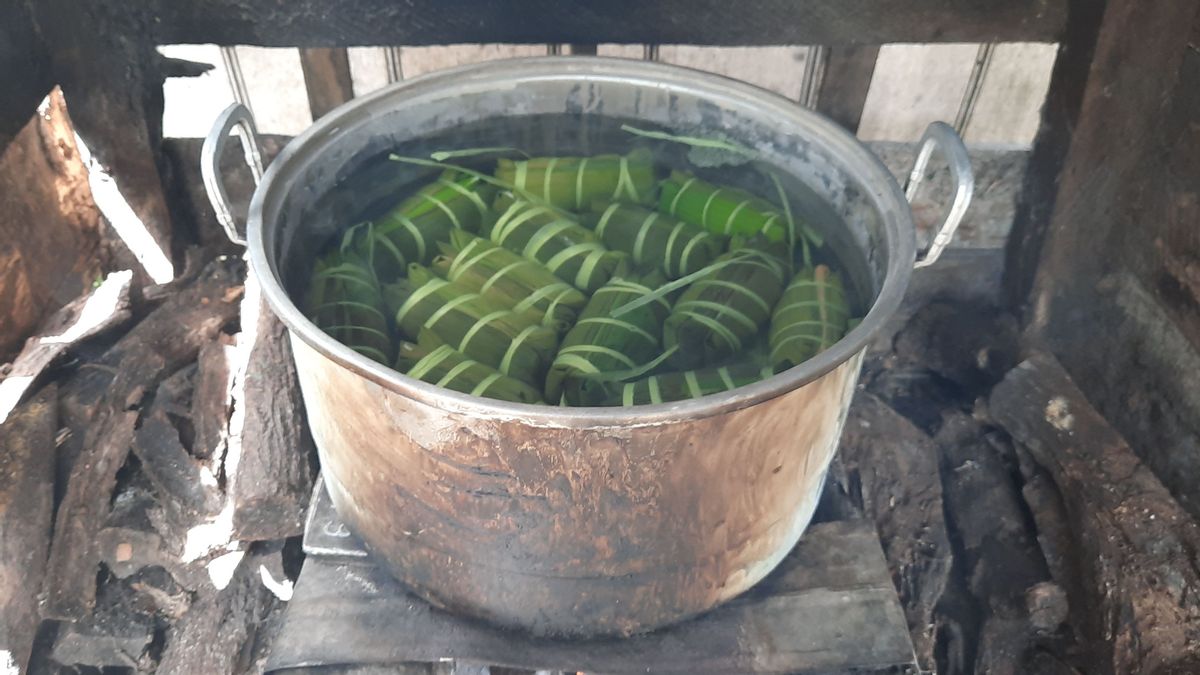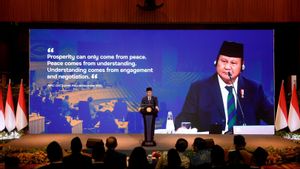JAKARTA - For the Bugis who adhere to Islam, Eid al-Fitr is a big celebration. Lebaran is always commemorated in a special way by the land of South Sulawesi. No need to doubt. Bugis people are always pictured as devout Muslims. On the other hand, Lebaran is an affirmation for the Bugis people to adhere to the customs passed down from their ancestors from generation to generation.
The real evidence lies in the existence of the Ma'burasa tradition. Not just any tradition. For the Bugis people, Lebaran would not be complete if the day before they did not follow the Ma'burasa tradition which in Bugis language means making a traditional culinary called burasa, the ketupat of the Bugis people. Moreover, in the process of making burasa which is made from rice, coconut milk is then given a little salt, which often involves the role of the entire nuclear family.
Fathers, mothers, and children also immersed themselves in the narrative of Ma'burasa's mutual cooperation. Some began to prepare food ingredients, some wrapped the burasa in banana leaves, and some were in charge of looking for firewood while keeping the fireplace burning.
Keep in mind, the burasa is deliberately not cooked on a gas stove, but is still cooked with firewood so that the authentic taste of burasa is maintained and can last up to three days without being heated. Interestingly, it's not just one or two families that do Ma'burasa.
The majority of Muslims in Bugis lands also take part in the tradition. In the five to six hour cooking process, the neighbors usually gather in the backyard of one of the residents to build intimacy with small talk and jokes. Automatically, through these activities, an emotional bond between neighbors often appears.
This picture was also painted by Rahman Mangussara in the book Walking on Water (2019). He himself described how the Bugis were so immersed in Ma'burasa's activities. No exception, those who are still children.
“Satisfied playing with bamboo firecrackers, this flock turned their attention to the activities of their grandmother and their family under the house. Asso's extended family gathered to prepare a special meal for the next day of Eid by making traditional foods such as Bugis signature ketupan called burasa and sticky tape called gambang. This traditional snack is what sells well two to three days after Eid, ”said Rahman.
Inevitably, this tradition can tie the memories of the children involved in Ma'burasa. As a result, the children will continue to keep the fun and togetherness of Ma'burasa's activities in their memories. In the future, if they are far from home, the excitement of tradition will make them miss, so that the desire to return to their hometown will intensify.
In fact, culinary offerings similar to lontong which are usually enjoyed with Coto Makkasar are not only favored by the Bugis. Foreign people also indulged in enjoying burasa. Lawrence Winkler, for example. Through the book Stories of the Southern Sea (2015), Winkler tells about his experience in Makassar and trying other specialties, one of which is burasa.
“We eat Sop Konro and Coto Makassar with stuffing from various parts of the cow, such as brain, tongue, intestines and mixed with nuts and special spices. We ate it all with gusto, especially when coupled with the very tasty basa, "wrote Winkler.
Loaded with valuePreserving Ma'burasa is the same as celebrating the euphoria that it contains. To explain this, we contacted a cultural observer from South Sulawesi, Feby Triadi. For him, Ma'burasa can be a legendary tradition because it is full of important life values.
Some of them can be seen right after the burasa is ripe. According to tradition, before burasa is served, a prayer reading ritual known as Mabbaca-Baca is held first. Usually, the burasa will first be served to a priest or ustaz who is leading a prayer reading as a form of gratitude for having gone through Ramadan and so that the owner of the house can return to meet Ramadan next year.
In this process, a sense of social solidarity and a discourse of power re-emerged. This is because those who feel respected in society will call other residents to eat and taste the burasa food they cook. The rest, there are also other values such as the concept of togetherness in eating burasa.
"In Burasa, there is a concept of togetherness. This is because after the burasa is wrapped in banana leaves, three to five burasa will be combined and tied together to become one whole burasa. This concept is formed based on a cultural sense of unity, ”he said when contacted by VOI, May 22.
Not only that, he also added that regarding Ma'burasa there is also a sense of sharing. Take for example in one bunch of burasa, at least burasa can be eaten up to two to three people. It is so special, so solidarity arises rather than eating burasa.
"Although perhaps the materials and tools for making burasa are the same as in other places, such as in Sumbawa. However, what distinguishes the Buginese burasa lies in people's memories of the making behavior, memories of the village, to the memories of the parents who were present at the time of making burasa, "concluded Feby.
The English, Chinese, Japanese, Arabic, and French versions are automatically generated by the AI. So there may still be inaccuracies in translating, please always see Indonesian as our main language. (system supported by DigitalSiber.id)










